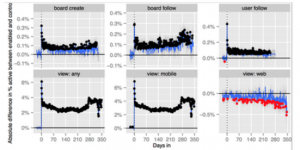We all have those colleagues at work who stand out because they have so much talent. They are smart, incisive, get a lot of things done, deliver really good work, and are generally very driven. Everyone would like to have them on a project or as a permanent member of their team; and they act as magnets for more and bigger assignments. There is nothing wrong with that, of course, and when deployed effectively, they can really help an organization move forward.
However, there is a pitfall to watch out for here: Not only are these individuals highly sought after, but these employees tend to take every opportunity they’re offered. They love challenges, enjoy participating in important activities, and become increasingly more motivated to participate in everything. And because these folks can handle a lot, they often lack a natural ability to say no to a request.
That, unfortunately, can put them at a higher risk of burning out and/or quitting. According to a 2023 report by management software company PerformYard, high performers report feeling burned out at a higher rate than average workers.
So how can you adjust the workload of your best employees and increase the impact they make to your organization by improving their engagement?
SET BOUNDARIES
What I’ve seen through my work with hundreds of talented managers is that if they work on too many projects, they are less productive due to the cost of switching between initiatives. Because of this, I recommend limiting the number of big assignments to three, and checking in about their workload on a regular basis. Ask what work is feeling the most rewarding, and see what simpler tasks could get offloaded to others.
It’s also important to check in with these employees to try to get to the root of assumptions they’re making about what is a “priority.” For example, I worked recently with someone we’ll call Werner, a high performer at a biotech company. He was overloaded and close to checking out, so I challenged him on his assumptions about work. The most dominant: He wanted to show colleagues that he could do it all since he thought that’s what they expected from him as a big talent. After discussing this with his teammates, it became clear that this wasn’t the case. The team essentially was hoping he’d be able to finish one high-impact project more quickly.
After learning this, he decided that when a new initiative came up, he would discuss with his team who would pick up the project, or decide that it would be put on hold until someone had the time to take it on. This allowed Werner to focus better and ensured that he’d complete projects earlier and more effectively.
ENSURE THEY HAVE SUFFICIENT RESOURCES
For most initiatives, it’s impossible to define at the beginning the amount of resources needed to deliver the output. So, discuss regularly if sufficient resources are available to accomplish what is expected—and adjust when needed. Pay extra focus to female talent, as research indicates they are less likely to request and receive additional resources, even when that support is needed; and they are 44% more likely to get stuck with work that is not directly related to their job.
SET REASONABLE EXPECTATIONS
Often the most talented people are asked to do two jobs at the same time—say, when someone on the team is out sick or when there’s a vacancy or hiring freeze. Before asking a high performer to temporarily fill in for someone, sit down with them and set clear expectations on what priorities are in both jobs and what can be deprioritized or delegated to another team member. It’s also important to discuss how performance will be evaluated, knowing that it’s impossible to meet 100% of what’s expected in each job. Make sure to keep a close eye on them while they are covering both jobs.
Around 2010, I was appointed CEO of a company. As one of my onboarding activities, I chose to conduct some exit interviews to understand why people were leaving. I do this at every company I join. One of the very first interviews was with “Alice.” She said she was leaving since she’d been deemed an “underperformer” in her last performance review. I was curious about this because, to me, she seemed very talented and motivated. I discussed this with the HR director and it turned out that her underperformance in her key role was because she’d been asked to do two separate jobs. What was asked of her was impossible to deliver. That was such a waste of a very talented colleague.
TRY TALENT MAPPING AND MATCHING
Talent mapping and matching of teams allows you to see what skills there are on a given team, which can help you better distribute assignments. It’s a very energizing team activity. It works as follows: Ask each team member to write down their talents and skills. Share this list with the entire team, and ask the other teammates to add to this list, based on what they know about their colleague. Repeat this for everyone on the team.
You can now use this talent map to match the right people with new initiatives. As a result, you’ll get a better distribution of the workload, which can take the pressure off your usual go-to person. I have worked with more than 50 teams in the past two years on talent mapping and matching, and every team was surprised by the amount of untapped strengths in their organization.
FOCUS ON UPSKILLING AND RESKILLING
In a time when reskilling is increasingly important, make learning and development a regular topic in your one-on-ones with direct reports. Use this time to agree on goals for both the high achiever and his or her team. This helps everyone since it allows the workload to be distributed in a more even way, taking the pressure off your talented direct report and allowing everyone to contribute more effectively.
(12)
Report Post






